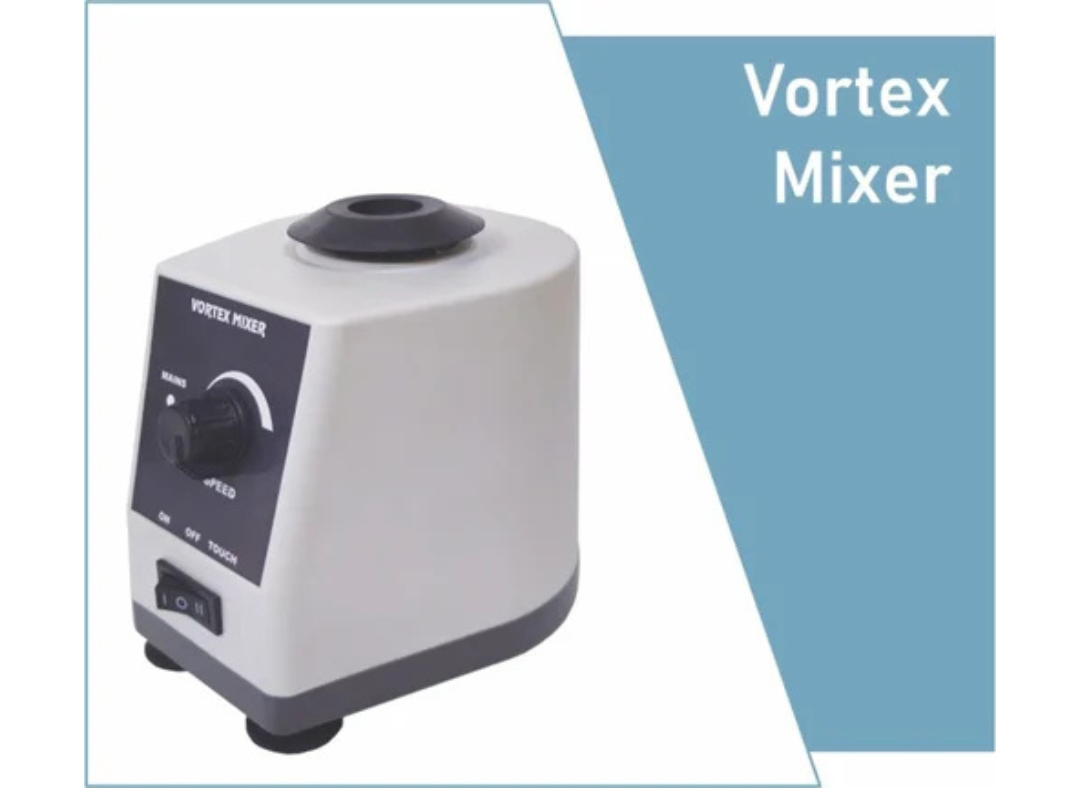4-A Gobind Nagar, Ambala Cantt - 133001, Haryana, India
+91 9996230084
What is a Vortex Mixer and How Does it Work?

In modern laboratories, efficient mixing of liquids is essential for accurate experiments and smooth workflows. One tool that has become indispensable in scientific, medical, and industrial labs is the vortex mixer. But what exactly is a vortex mixer, and how does it work? In this comprehensive guide, we’ll explore its features, working principles, types, and applications.
What is a Vortex Mixer?
A vortex mixer is a laboratory device used to mix small volumes of liquids quickly and efficiently. It creates a rapid circular motion in the liquid, forming a vortex, hence the name. This tool is particularly useful for mixing reagents, suspending cells, or preparing samples for analysis in test tubes, vials, or microplates.
Vortex mixers are widely used in biological, chemical, pharmaceutical, and clinical laboratories because they save time, enhance consistency, and reduce human error in sample preparation.
How Does a Vortex Mixer Work?
The working principle of a vortex mixer is simple yet highly effective. Here’s how it works step by step:
-
Placement of the Container: A tube, vial, or microplate containing the liquid sample is placed on the rubber or foam platform of the mixer.
-
Activation: Most vortex mixers have either a touch mode (activated by pressing the container down) or a continuous mode (running constantly).
-
Rapid Circular Motion: When activated, the platform oscillates in a circular motion at high speed, creating a vortex in the liquid.
-
Mixing Effect: The vortex motion ensures thorough mixing of the liquid contents, even in small volumes, in a matter of seconds.
This simple mechanism makes vortex mixers reliable and easy to use for repetitive laboratory tasks.
Key Features of a Vortex Mixer
Modern vortex mixers come equipped with a range of features to meet diverse laboratory needs:
-
Variable Speed Control: Allows adjustment of the vortex intensity depending on the sample type.
-
Touch or Continuous Mode: Offers flexibility for quick mixing or long-duration operations.
-
Compact and Lightweight Design: Saves bench space and allows easy portability.
-
Durable Construction: Usually made with corrosion-resistant materials suitable for laboratory environments.
-
Noise Reduction: Many mixers operate quietly to ensure a comfortable working environment.
Types of Vortex Mixers
Vortex mixers can be classified based on their operational design and application:
1. Standard Vortex Mixers
These are basic models suitable for general lab use. They often feature single-speed operation or simple variable speed adjustment.
2. Multi-Tube Vortex Mixers
Designed to mix multiple tubes simultaneously, these mixers improve efficiency in high-throughput laboratories.
3. Electronic or Digital Vortex Mixers
Equipped with digital speed control, timers, and programmable settings, these mixers offer precision and reproducibility for research-intensive applications.
4. Mini or Portable Vortex Mixers
Compact models designed for small-scale operations or field laboratories where portability is crucial.
Applications of Vortex Mixers
Vortex mixers are versatile tools used in a variety of scientific and industrial applications:
1. Molecular Biology and Biochemistry Labs
Used for mixing DNA, RNA, enzymes, and other reagents to ensure uniform reactions.
2. Clinical and Medical Laboratories
Essential for preparing blood, urine, or serum samples before analysis.
3. Chemical Laboratories
Helps dissolve solids in liquids or mix chemical solutions uniformly.
4. Pharmaceutical Industry
Used in formulation, quality control, and sample preparation for testing drugs.
5. Educational Laboratories
Perfect for students performing experiments that require fast and consistent sample mixing.
Advantages of Using a Vortex Mixer
Vortex mixers provide several benefits that make them a must-have in laboratories:
-
Time Efficiency: Mix samples in seconds, reducing manual effort.
-
Consistency: Ensures uniform mixing, minimizing experimental errors.
-
Ease of Use: Simple operation requires minimal training.
-
Versatility: Can mix various types of liquids and containers.
-
Compact and Reliable: Occupies minimal space and operates with long-term durability.
How to Use a Vortex Mixer Safely
Proper usage is important to ensure safety and prolong the life of the device:
-
Check the Sample Volume: Avoid overfilling tubes to prevent spillage.
-
Secure the Tube Properly: Place tubes in the center of the platform to ensure uniform mixing.
-
Select Appropriate Speed: Use lower speeds for delicate samples and higher speeds for viscous liquids.
-
Avoid Continuous Overuse: Give the device short breaks to prevent overheating.
-
Wear Protective Equipment: Use gloves and goggles when mixing hazardous chemicals.
Choosing the Right Vortex Mixer
When selecting a vortex mixer for your lab, consider the following factors:
-
Speed Range: Adjustable speeds allow better control for different applications.
-
Mixing Platform Type: Choose platforms suitable for tubes, vials, or microplates.
-
Operational Mode: Touch-activated vs. continuous operation.
-
Size and Portability: Ensure it fits your lab space and workflow.
-
Build Quality: Durable and chemical-resistant construction ensures long-term use.
Conclusion
A vortex mixer is a simple yet powerful laboratory device that significantly enhances efficiency and consistency in sample preparation. Understanding what a vortex mixer is and how it works can help laboratory professionals choose the right tool for their experiments.
From educational labs to high-tech research facilities, vortex mixers are essential for mixing liquids quickly, safely, and uniformly, making them an indispensable part of any modern laboratory.

